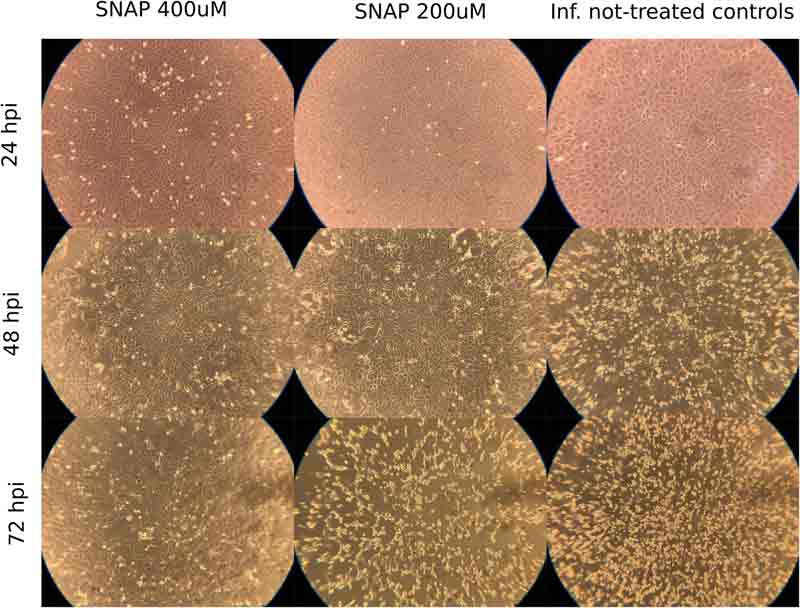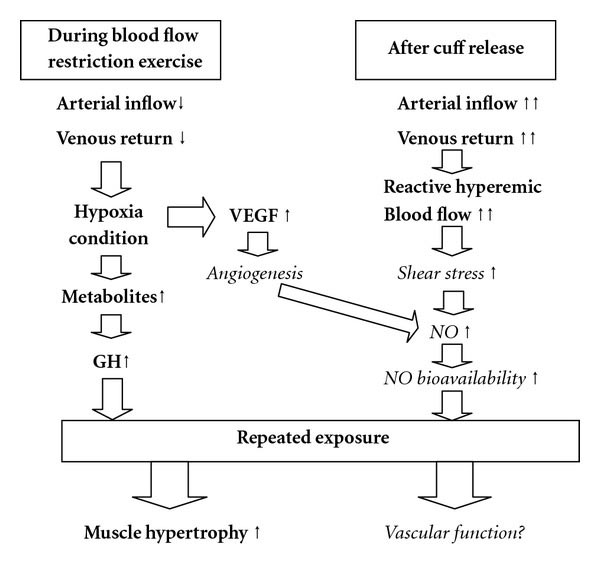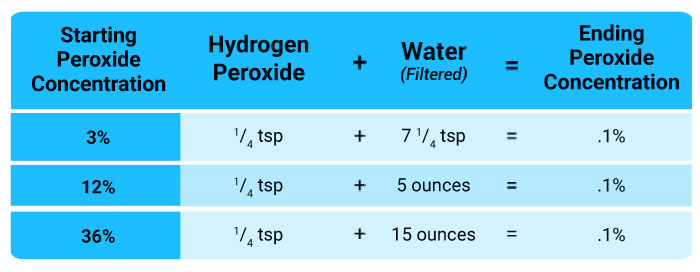I’ve written many articles reviewing a wide variety of therapies demonstrated or hypothesized to have a positive impact on SARS-CoV-2 infection and COVID-19 disease progression. Now, we can add nitric oxide (NO) to the list — not to be confused with nitrous oxide (N2O, a sedative often referred to as laughing gas). According to Åke Lundkvist, a professor at Uppsala University who led the study1 in question:2
"To our knowledge, nitric oxide is the only substance shown so far to have a direct effect on SARS-CoV-2. Until we get a vaccine that works, our hope is that inhalation of NO might be an effective form of treatment. The dosage and timing of starting treatment probably play an important part in the outcome, and now needs to be explored as soon as possible."
What Is Nitric Oxide?
Nitric oxide (NO) is a soluble gas continually produced from the amino acid L-arginine inside your cells. While NO is a free radical, it’s also an important biological signaling molecule that supports normal endothelial function and protects your mitochondria — the little “power stations” in your cells that produce a majority of your body’s energy in the form of ATP.
It’s stored in the lining of your endothelium (blood vessels), and can be triggered either through exercise or dietary means. NO is a potent vasodilator, helping relax and widen the diameter of your blood vessels.
Healthy blood flow in turn allows for efficient oxygenation of tissues and organs, and aids in the removal of waste and carbon dioxide. Importantly, NO infuses into areas that are hypoxic, meaning in need of oxygen, and both your heart and brain3,4 are heavy oxygen users. NO also:
|
Improves your immune function, making your body better equipped to fight off foreign pathogens |
|
Has powerful antibacterial potential |
|
Protects your mitochondrial health |
|
Helps maintain physiological homeostasis — For example, in your gut, NO regulates mucosal blood flow, intestinal motility and the thickness of mucus |
|
Plays an important role in the homeostasis of reactive oxygen species, which can have a significant impact on metabolic pathways5 |
|
Helps suppress inflammation |
|
Promotes angiogenesis, the formation of new, healthy blood vessels6 |
|
Helps improve your physical fitness — For example, raw beets have been shown to boost stamina during exercise by as much as 16% as a result of the increase in NO production7 |
|
Improves brain neuroplasticity by improving oxygenation of the somatomotor cortex, a brain area that is often affected in the early stages of dementia8,9 |
|
Helps reverse metabolic syndrome10 and has antidiabetic effects11,12 |
NO Effectively Inhibits SARS-CoV-2 Replication
As mentioned, NO is known to have broad-spectrum antimicrobial effects, and Swedish researchers have now demonstrated that NO effectively inhibits the replication of SARS-CoV-2 in vitro by targeting the SARS-CoV-2 main protease. The study13 in question was published in the October 2020 issue of Redox Biology. As explained in various sections of this paper:14
“Nitric oxide (NO) is a broad-spectrum antimicrobial and a potent vasodilator that has proved to be effective in reducing SARS-CoV replication and hypoxia in patients with severe acute respiratory syndrome …
NO has been demonstrated as an effective antiviral against SARS-CoV in vitro and in vivo by inhalation in very low concentrations in a small clinical trial.
Furthermore, inhaled NO improved arterial oxygenation in hypoxemic patients by redistributing blood flow in the lung to better ventilated regions, and counteracted blood clotting, both effects being of importance for COVID-19 patients.
The role of NO-inhalation in the prevention and treatment of COVID-19 has been proposed, but no clinical data has yet been reported. In the present study the antiviral effect of NO on SARS-CoV-2 infected cells was tested in vitro …
The NO-donor S-nitroso-N-acetylpenicillamine (SNAP) had a dose dependent inhibitory effect on SARS-CoV-2 replication … SNAP (NO donor), but not NAP (NO-lacking version of SNAP) showed a dose dependent reduction of SARS-CoV-2 viral RNA copy numbers, which proves that NO has an antiviral effect against SARS-CoV-2 and probably in the similar manner as previously described for SARS-CoV and other viruses …
Although the viral replication was not completely abolished (at 200 μM and 400 μM), SNAP delayed or completely prevented the development of viral cytopathic effect in treated cells, and the observed protective effect correlated with the level of inhibition of the viral replication.”
The image below compares and contrasts the cytopathic effects over time (24-hour intervals) between cells treated with SNAP (a NO donor) at 200 μM and 400 μM, and untreated controls. The cells are magnified 100 times.

SARS-CoV-2 Main Protease Is an Attractive Drug Candidate
The SARS-CoV-2 main protease is a key enzyme in the virus’ life cycle,15 which makes it an attractive target for drug development.16 As explained in one Science paper,17 the SARS-CoV-2 main protease enzyme “cuts the polyproteins translated from viral RNA to yield functional viral proteins.”
By targeting this enzyme, researchers believe you can effectively combat SARS-CoV-2, and that is precisely what NO does. According to the Swedish researchers:18
“Based on this study and previous studies on SARS-CoV in vitro, and in a small clinical trial, we conclude that NO may be applied for clinical use in the treatment of COVID-19 and other human coronavirus infections.”
How to Increase NO Production Naturally
While the Swedish researchers suggest using NO inhalation therapy — which is already used for conditions such as hypoxic respiratory failure in adults19 and respiratory failure in neonates20 — you could also boost your resilience against the virus by implementing lifestyle strategies that increase your natural NO production.
For clarity, these strategies would not be of immediate help if you come down with a SARS-CoV-2 infection. Rather, by increasing your body’s production of NO on a regular basis, the virus may be less likely to gain a foothold if you’re exposed to it. That said, three strategies that will increase NO production in your body include:
- Blood flow restriction training (BFR)21
- Getting sensible sun exposure on large portions of your body, as NO is released into your bloodstream when sunlight hits your skin22,23
- Eating nitrate-rich plant foods24,25,26 such as arugula and red beets. NO production can be further magnified by combining these foods with probiotics27
BFR Boosts Vascular Function by Increasing NO
To give you some more details about these strategies, BFR has been shown to improve your vascular function, and one of the ways by which it does this is by increasing NO production. As explained in a 2012 study published in the International Journal of Vascular Medicine:28
“… after several minutes of arterial cuff occlusion at proximal or distal portion in any artery, for example, brachial and popliteal artery, immediate cuff deflation can lead to increase shear stress induced by reactive hyperemia and activate endothelial nitric oxide (NO) synthase (eNOS).
This activation leads to a shear-stress-mediated augmented NO production in endothelial cells … NO bioavailability in the endothelial cell … is an important factor and predictor in protecting against cardiovascular disease.”
The local muscle hypoxia brought on by BFR exercise also significantly increases vascular endothelial growth factor (VEGF), which act like “fertilizer” for your blood vessels. The medical term for this development of new blood vessels is angiogenesis. Angiogenesis, in turn, enhances NO bioavailability.
The following graph illustrates the vascular changes that occur in response to BFR. To learn more about BFR, including how to perform it properly, see “What You Need to Know About Blood Flow Restriction Training.”

Whole Body UVA Irradiation Triggers NO Release
Next up: Sun exposure. It doesn’t get any easier than this, really. All you need to do is expose as much skin as possible to bright sunlight. As always, you’ll want to make sure you don’t stay out too long. Sunburn is counterproductive as it will only harm your skin. Once your skin turns the lightest shade of pink, move into the shade or put on clothing and a hat.
Ultraviolet A (UVA) and the near-infrared light spectrum both increase NO, so you’re getting that benefit from both ends of the light spectrum. As explained in a 2009 paper29 in the journal Circulation Research, when you expose your body to sunlight, photolabile NO derivates such as nitrite and S-nitroso thiols decompose and form vasoactive NO. (Photolabile means the compounds are altered or undergo chemical changes in response to light).
Eat a Nitrate-Rich Diet
Lastly, the dietary component. Dietary nitrates are converted into nitrites by oral bacteria during chewing. Once the nitrites are swallowed and come into contact with stomach acid, they get converted into NO. You can find more in-depth details about this conversion in “Top 9 Reasons to Optimize Your NO Production.” Nitrate-rich foods that can boost your NO level include:30,31,32
|
Arugula |
Red beets / fermented beets |
Rhubarb |
|
Cilantro |
Butter leaf lettuce |
Spring greens like mesclun mix |
|
Basil |
Oak leaf lettuce |
Swiss chard |
As mentioned, taking a probiotic can optimize the NO production when eating nitrate-rich foods. The reason for this is because gut bacteria are involved in the first step of the NO metabolism chain. Probiotic bacteria such as Lactobacillus reduce nitrate to nitrite, the latter of which becomes a substrate for NO. So, by adding probiotics, you increase the NO substrate, which allows for higher levels of NO to be generated.
Aside from the many benefits already listed, NO has also been shown to improve muscle contractions in your diaphragm, thereby improving breathing. This, beside its antiviral effects, can have a direct benefit for COVID-19.
For the study,33 researchers split old mice into two groups. (For reference, the mice used in the study were 24 months old, which is equivalent to about 70 years of age in humans.) One group was given drinking water that contained sodium nitrate daily for 14 days. The other group was given plain water.
After the study period, they measured the isometric force and peak power of the diaphragm muscles in the mice and found that both significantly increased in the nitrate group. This increase in force and power translated to improved contraction of the diaphragm muscle, which can then improve lung function and breathing.
The increased power in the diaphragm could also help older people clear their lungs more effectively, which may help reduce the risk of developing infections. Your body’s ability to produce NO declines with age, so it’s important to take steps to increase your NO production as you get older. Respiratory muscle function also declines with age, contributing to breathing troubles, impaired airway clearance and a decreased quality of life.
Since nitrates can improve muscle function of the diaphragm, it may help improve the outlook for older populations with respiratory infections like COVID-19. Dietary nitrates also improve oxygen uptake by dilating the blood vessels and allowing more oxygen to be delivered to muscles, like the diaphragm, and other cells.34
How Molecular Hydrogen Impacts NO Production
In conclusion, I’d like to address the detrimental side of NO, and how this plays into COVID-19. As explained by Tyler W. LeBaron in a recent video lecture featured in “How Molecular Hydrogen Can Help Your Immune System,” most of the destruction wrought by SARS-CoV-2 is through reactive oxygen species (ROS) and systemic inflammation.
And, as mentioned earlier, NO is both a free radical and a signaling molecule. As such, it can have either positive or negative effects, depending on its levels and what else is going on.
ROS are molecules that cause oxidative damage. However, they’re not all bad all the time. Neutrophils that produce ROS also produce NO and superoxide. Superoxide helps kill pathogens, but you also don’t want too much of it, so it needs to be regulated. The same goes for NO.
While NO can inhibit viral replication and boost your immune system, you don’t want too much, because as levels of superoxide and NO rise, they combine and form peroxynitrites, which are extremely damaging. Peroxynitrites in turn form hydroxyl radicals, the most cytotoxic ROS.
Normally, when superoxide has done its job, it’s converted by superoxide dismutase into hydrogen peroxide, which in turn is converted into water and oxygen. This process is regulated by a transcription factor called Nrf2/keap1.
When this transcription factor is activated, it triggers your body’s natural antioxidants such as glutathione and catalase. Nrf2 — which is involved in phase 2 detoxification — regulates more than 200 protective proteins and enzymes. The problem is that when ROS is overabundant and out of control, the Nrf2 system is depleted and can no longer regulate the inflammatory process.
Molecular hydrogen (H2 gas) has the ability to activate the Nrf2/keap1 pathway, thereby replenishing your endogenous antioxidants. In so doing, H2 helps regulate and maintain homeostasis in the whole system, preventing the infection from getting out of control and causing cell death.
H2 can also lower excessive NO and superoxide production by downregulating NOX and NOS enzymes. In a scenario such as COVID-19, this would be good, as when these two molecules are excessively elevated they combine to create the pernicious peroxynitrite molecule.
Considering very high levels of NO appear to be part of the COVID-19 disease process in the later stages, it seems NO inhalation therapy might be best suited in the early stages of infection, not the more advanced stages when inflammation is running wild.
As noted by the Front-Line COVID-19 Critical Care (FLCCC) Alliance,35,36 peak viral replication takes place at the earliest signs of symptoms, which include cold/flu-like symptoms, loss of taste and smell, myalgia (muscle pain) and general malaise.
At this time, the focus should be on antiviral therapies — which is what NO inhalation therapy, in this case, could be designated as. As symptoms worsen, viral replication actually diminishes automatically, giving way to immune dysregulation, so at this point, NO might cause more problems than it solves.
Nebulized Hydrogen Peroxide — A Highly Effective Home Remedy
While unrelated to NO, I believe one of the most effective treatment options available is nebulized hydrogen peroxide. This is a home remedy I recommend everyone familiarize themselves with, as in many cases it can improve symptoms within mere hours. It is particularly effective in those who are in the later stages of the illness.
Dr. David Brownstein, who has successfully treated over 100 COVID-19 patients with nebulized hydrogen peroxide, published a case paper37 about this treatment in the July 2020 issue of Science, Public Health Policy and The Law. He also discusses its benefits in a recent interview I did with him.
In my April 2020 article, “Could Hydrogen Peroxide Treat Coronavirus?” I reviewed some of the basic science of how hydrogen peroxide works, as well as some of the studies assessing its therapeutic potential. The most relevant study38 was published in March 2020 in the Journal of Hospital Infection. They studied 0.5% hydrogen peroxide, and found it killed human coronaviruses, including the coronaviruses responsible for SARS and MERS.
Nebulized hydrogen peroxide is extremely safe. Brownstein has used it for 25 years with no ill effects being found. It’s also incredibly inexpensive, and you can administer it at home, without a prescription. In my view, it is one of the absolute best therapies for viral infections like SARS-CoV-2 or even worse respiratory viruses that will likely be unleashed in the future.
I strongly recommend buying a desktop nebulizer. It needs to produce a very fine mist, and desktop versions are stronger than handheld battery operated models. The one I use is the Pari Trek S Compressor Aerosol System with a face mask, (sold separately) not with the supplied mouth piece.
It is important to acquire the equipment and peroxide BEFORE you need it, as the sooner you treat the infection the better your results will be, although the testimonials are unbelievably impressive even in late stage illness. It is not necessary to treat yourself preventively, but only if you are sick or exposed to someone who is.
While I’ve been using a 0.1% dilution, Brownstein uses an even lower concentration of just 0.04%. Neither Brownstein nor I recommend using commercial 3% hydrogen peroxide found in most grocery stores, as it has potentially toxic chemical stabilizers in it. For optimal benefits, use food-grade peroxide and dilute it appropriately, using saline.

To dilute 35% food-grade peroxide into a 0.04% solution, first dilute it down to 3% by mixing 1 part peroxide with 10 parts sterile water, then take 3 cubic centimeters (CCs) of that 3% dilution and add it to a 250CC bag of normal saline. This brings it down to a .04% hydrogen peroxide concentration. In the video above, I go over the basics of how to do nebulized peroxide.
from Articles https://ift.tt/3lJtHDQ
via IFTTT








0 comments:
Post a Comment